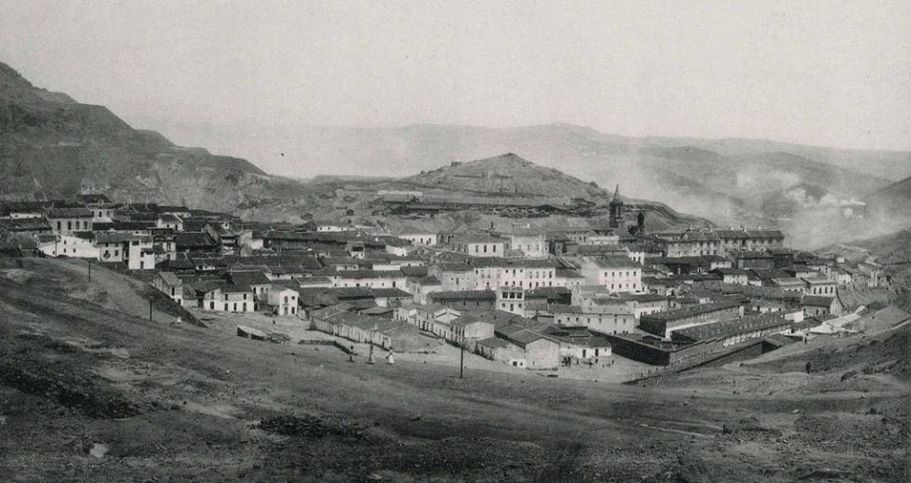Rio Tinto
Sixty kilometres north of the Southern Spanish, coastal city of Huelva runs, west to east, a chain of mountains, the Sierra de Aracena. Two thousand years ago the Romans worked them for their metallic ores and others continued to do so until those ores were thought to have been worked out. But still the main river that flows from the Sierra to the Atlantic Ocean at Huelva itself ran with leached metallic traces, as a result of which it was named the Red River, the Rio Tinto.
But by the middle of the 19th Century with newer mining techniques it was thought more metals might be extractable and in 1873 a cash-strapped, Spanish government was persuaded to sell local mining rights cheaply to a new, British company, named after the river itself, Rio Tinto Mining. Its president and major shareholder was a Scot, Hugh Mackay Matheson, the nephew of James Matheson, also Scots-born and joint-founder of Jardine Matheson, the present-day trading conglomerate based in Hong Kong.
Once the deal with the Spanish had been completed mining operations began almost straight away, as di the building of railway to Huelva. And the need for the latest technology meant mining and railway engineers and other workers were brought from where technology was most advanced, Britain. With them came their game of choice, football. And the new arrivals had to be housed. The building of the town of Minas de Rio Tinto was begun and there, it is said, William Bice organised what must have been the first kick-abouts in Spain. He was probably a Cornishman, the son and grandson of copper miners and a copper miner himself.
More formalised football games are said in Rio Tinto to have followed the initial ad-hoc ones by August 1874. And in 1878, the British residents did what they always did. They founded a club, the "English Club". However, its first president was a Scot, the newly-arrived company doctor, 30-year-old John Sutherland Mackay, a son of the Free Kirk, born in Lybster in Caithness in 1848. It was perhaps not such a surprise. By 1881, when the Bishop of Gibraltar, the Anglican Bishop, came to visit he found in Rio Tinto a mostly Scots community of eighty employees and their families with a Presbyterian minister but no priest. A Scots doctor for a majority Scots community seems axiomatic, as does he as a figurehead.
By 1880, with the development of the mine it was becoming clear that the Rio Tinto settlement that had grown up around its main street of Calle Sanz was in the way of expansion. So between 1882 and 1884 a new, British- and Spanish-style quarter, Bellavista, of twenty houses including the mine manager's was built around a new club-house and a kirk, St. Andrew's, still the only kirk in Spain to be maintained by the Catholic Church.
And organised football was then played at the new club, out of which emerged Rio Tinto F.C., the first footba'-club on Spanish soil. In 1882 there were games between Rio Tinto and Huelva, as recorded by one of the Scots mining employees, Daniel Macmillan Young from Ayrshire, who lived out the rest of his life there in Southern Spain, and published on 6th May that year in La Provincia, the local English-language paper the following report.
” On a beautiful afternoon and before a large crowd the long awaited game between the teams from Huelva and Rio Tinto was played. We may have to wait for some time to witness another match as well organised and balanced with teams of equal strength. Although Rio Tinto had some tough players, Huelva played with greater subtlety and craftiness. Huelva was on the attack right through the game, but at the last minute it was Rio Tinto that slipped in the winning goal.”

Minas de Rio Tinto and Bellavista are still monuments to their Scots heritage and the town still has football club, Rio Tinto Balompie. But it is a Spanish club not the original Rio Tinto Football Club. It hung up its boots temporarily like so many British-origin football clubs world-wide at the outbreak of the Great War, restarted at the end of the hostilities but finally folded in 1932. However, that does not mean that nothing remains of the original British sporting presence in the town. Perched amidst the pines on the edge of the modern mine's huge open-cast pit and opened in 1890, is that other sign of specifically Scots presence, that original but now long-vanished Caledonian community's eighteen-hole golf course.
Other Sources:
Wiki - Club Ingles (Escoces) Rio Tinto
Rio Tinto Today:
Back to the Spanish Trail
or the SFHGHome page
© Copyright 2022-2025. All rights reserved/Todos los derechos reservados.
Any use of material created by the SFHG for this web-site will be subject to an agreed donation or donations to an SFHG appeal/Cualquier uso del material creado por SFHG para este sitio web estará sujeto a una donación acordada o donaciones a una apelación de SFHG.
We need your consent to load the translations
We use a third-party service to translate the website content that may collect data about your activity. Please review the details in the privacy policy and accept the service to view the translations.


